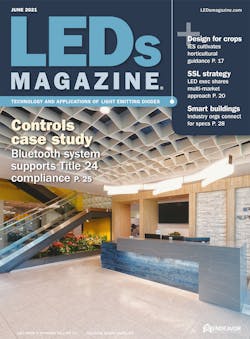The United Nations estimates that buildings account for 36% of the world’s total energy use and 39% of all energy-related carbon emissions. Considering that most buildings remain up to 70% vacant, it becomes apparent that a significant amount of the carbon being produced simply goes to waste.
Smart lighting interconnected through a network and operated and maintained by a centralized building system or through the cloud can incorporate different technologies based on sensors and software.
Traditionally, smart lighting controls have been used to manage the level of lighting in an energy-efficient manner, such as maintaining the desired light levels in specific areas. But smart lighting systems have the potential to use lighting controls to connect a range of other services, including data collection and analysis, security, fire safety, climate control, navigation, and so on.
“Digital networking technology is rapidly developing, but the smart building infrastructure needed to take advantage of this technology doesn’t exist today to fully capitalize on these developments,” explained Adrian Green, engineering director at Amphenol Commercial Products, which is a member of the Zhaga Consortium. “What’s needed are smart LED luminaires that can be easily upgraded to allow for future IoT [Internet of Things] connectivity. Standardization can enable that.”
This is where Zhaga Book 20 comes into play. Zhaga Book 20 brings together complementary specifications from the Zhaga Consortium and the Digital Illumination Interface Alliance (DiiA). The result is an essential standard toward achieving smart building infrastructure.
The Zhaga Consortium is a global lighting-industry organization that aims to standardize interfaces of components of LED luminaires, including LED light engines, LED modules, LED arrays, holders, electronic control gear (LED drivers), connectors, and sensing/communication modules. DiiA is the global industry organization for the Digital Addressable Lighting Interface (DALI), the global standard for digital communication between lighting-control devices.
Specifically, Book 20 defines an interface between an indoor LED luminaire and a sensing/communication module. Through the interface, the module connects to the LED driver and typically provides sensory inputs or enables communication between network components. Zhaga Book 20 provides interoperability between an indoor LED luminaire and a module by specifying the interconnect as well as the mechanical interface to mount sensors directly into the luminaire. Four sizes are defined which will accommodate common configurations of sensors. Two rectangular and two cylindrical form factors are defined.
Functionalities beyond illumination can also be supported. For example, the use of intelligent D4i drivers enables luminaires to collect, store, and report a wide variety of data in a standardized manner. It can also result in significant revenue for companies. According to a report by Navigant Research, indoor LED sales are expected to grow 6.9% annually, from about $7 billion in 2019 to an estimated $13 billion by 2028. Furthermore, sales of lighting controls are forecasted to grow at 5.4% per year, and sales of IoT-based lighting systems by about 17.6%.
Perhaps most important, Zhaga Book 20 ensures that Zhaga-D4i certified luminaires will be the backbone of intelligent buildings everywhere. By creating a simple way of adding control/sensing modules into the building system’s architecture, this standard allows building managers to select luminaires today for the technology advances of tomorrow. This represents a step-change not only in smart lighting technology, but also in terms of energy savings.
Zhaga and DiiA have developed a joint certification program that is based on a standardized interface between drivers, luminaires, and sensing/communication modules. By replacing the sensor rather than the entire luminaire, we’ve essentially future proofed LED luminaires.
The new Zhaga-D4i certifications for modules, LED luminaires, and components are available to Zhaga associate and regular members. All submitted products must be tested for compliance against Zhaga specifications. Luminaires can be certified by Dekra and Intertek, the Zhaga accredited test centers for Zhaga Book 20. If successful, the product will be awarded Zhaga-D4i certification and can use the Zhaga and D4i logos. More information on the Zhaga-D4i certification program can be found at https://bit.ly/33ahAsb.
Get to know our expert
DEE DENTENEER is secretary general of the Zhaga Consortium. Denteneer has held positions at the University of Utrecht, the Statistical Office of the Netherlands, and Philips Research. He has a PhD in mathematics, and a background in wireless connectivity, lighting, project and program management, and finance. Currently, he is director of standards at Signify, focusing on strategy and governance in industry alliances. Alongside his position in the Zhaga Consortium, Denteneer is a member of the executive team, treasurer, and chair of the Finance Committee of the Zigbee Alliance; non-executive member of the board of the Philips Pension Fund; and a past Technical Working Group chair of the Fairhair Alliance.
Enjoyed this article? Visit our digital magazine for more like this >>

Dee Denteneer | Secretary General
Dee Denteneer is Secretary General of the Zhaga Consortium. He has a PhD in mathematics, and a background in wireless connectivity, lighting, project and program management, and finance. Dee is also Director of Standards at Philips Lighting, Technical Working Group Chair of the Fairhair Alliance and non-executive member of the Board of the Philips Pension Fund. Previous positions are a.o. member of the executive team and treasurer of the ZigBee Alliance, Chair of 802.11s, and Principal Scientist at Philips Research.






